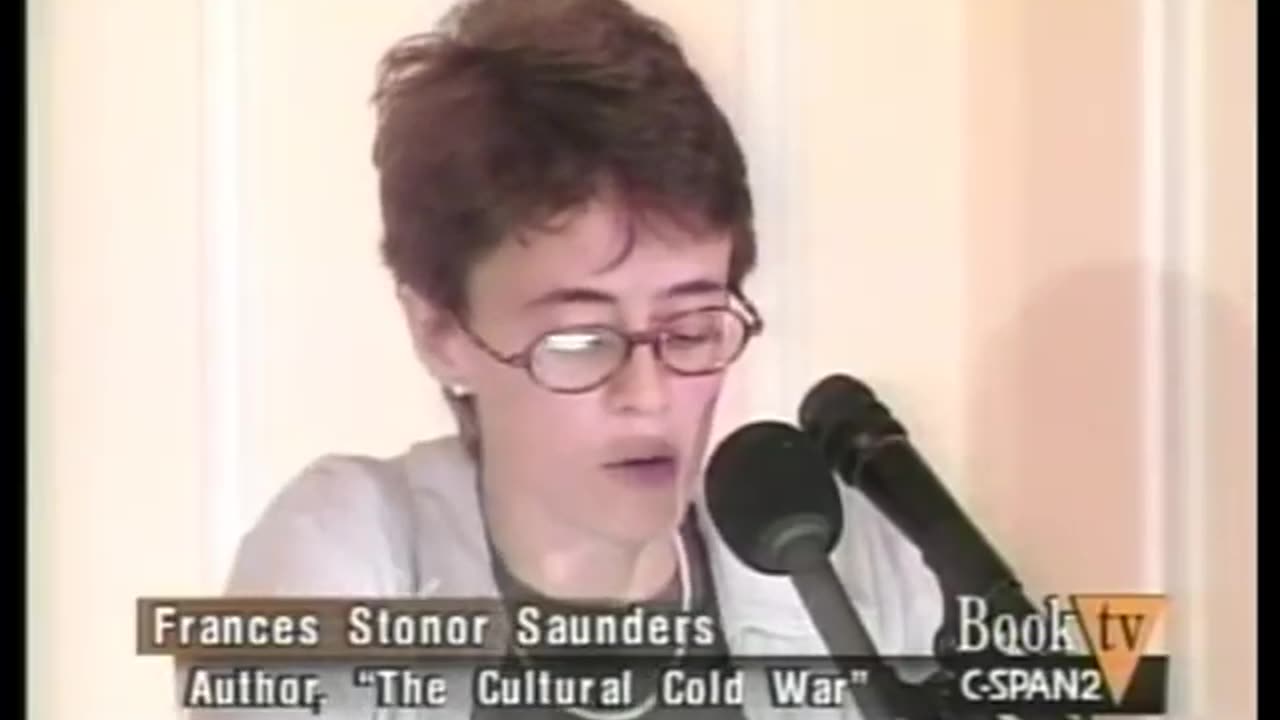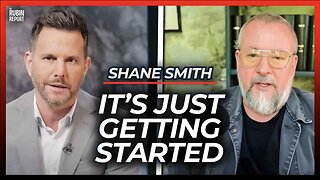Premium Only Content

Covert Cultural Operations (2000)
Mar 5, 2015
The Film Archives
In addition to being a political and economic battle, the confrontation between the United States and the Soviet Union was a clash of cultures.
Communist party leaders depicted the United States as a cultural black hole and cited their own significant culture as evidence that they were the inheritors of the European Enlightenment (Wilford 100). Americans, on the other hand accused the Soviets of “disregarding the inherent value of culture” and subjugating art to the controlling policies of a totalitarian political system. The United States saw itself as being saddled with the responsibility of preserving and fostering the best cultural traditions of western civilization, as many European artists sought refuge in the United States before, during, and after World War II (Wilford 101). Europe and European Universities turned out to be in the epicenter of the Cultural Cold War.
In 1950, the Central Intelligence Agency (CIA) surreptitiously created the Congress for Cultural Freedom (CCF) to counter the Cominform’s “peace offensive”(Wilford 101). The Congress had “offices in thirty-five countries, employed dozens of personnel, published over twenty prestige magazines, held art exhibitions, owned a news and features service, organized high-profile international conferences, and rewarded musicians and artists with prizes and public performances” at its peak (Saunders 2000). The intent of these endeavors was to “showcase” US and European high culture, including not just musical works but paintings, ballets, and other artistic avenues, for the benefit of neutralist foreign intellectuals (Wilford 102).
Many US government organizations used classical symphonies, Broadway musicals, and jazz performances (including musicians such as Dizzy Gillespie) in attempts to persuade audiences worldwide America was a cradle for the growth of music (Wilford 108-109). The CIA and, in turn the CCF, displayed reluctance to patronize America’s musical avant-garde, experimental, including artists such as Milton Babbitt and John Cage. The CCF took a more conservative approach, as outlined under its General Secretary, Nicolas Nabokov, and concentrated its efforts on presenting older European works that had been banned or by the Communist Party (Wilford 109).
In 1952, the CCF sponsored the “Festival of Twentieth-Century Masterpieces of Modern Arts” in Paris. Over the next thirty days, the festival hosted nine separate orchestras which performed works by over 70 composers, many of whom had been dismissed by communist critics as “degenerate” and “sterile,”; included in this group were composers such as Dmitri Shostakovich and Claude Debussy (Wilford 109). The festival opened with a performance of Stravinsky’s The Rite of Spring, as performed by the Boston Symphony Orchestra (109). Thomas Braden, a senior member of the CIA said: “The Boston Symphony Orchestra won more acclaim for the US in Paris than John Foster Dulles or Dwight D. Eisenhower could have brought with a hundred speeches” (Wilford 110)
The CIA in particular utilized a wide range of musical genres, including Broadway musicals, and even the jazz of Dizzy Gillespie, to convince music enthusiasts across the globe that the U.S. was committed to the musical arts as much as they were to the literary and visual arts. Under the leadership of Nabokov, the CCF organized impressive musical events that were anti-communist in nature, transporting America’s prime musical talents to Berlin, Paris, and London to provide a steady series of performances and festivals. In order to promote cooperation between artists and the CCF, and thus extend their ideals, the CCF provided financial aid to artists in need of monetary assistance.
However, the CCF failed to offer much support for classical music associated with the likes of Bach, Mozart, and Beethoven because it was deemed an “authoritarian” tool of Soviet communism and wartime German and Italian fascism. The CCF also distanced itself from experimental musical avant-garde artists such as Milton Babbit and John Cage, preferring to focus on earlier European works that had been banned or condemned as “formalist” by Soviet authorities.
During the Cold War, Louis Armstrong was promoted around the world as a symbol of US culture, racial progress, and foreign policy. It was during the Jim Crow Era that Armstrong was appointed a Goodwill Jazz Ambassador, and his job entailed representing the American government’s commitment to advance the liberties of African Americans at home, while also working to endorse the social freedom of those abroad.
Culture/Society Reading List
*A Crowley's Influence Pop-Occulture
*A Brief History Future Jacques Attali
*Changing Images Man O W Markley
*Children of the Beast W Ramsey
*Cultural Cold War CIA World Arts Letters
*Grave Influence by Brannon Howse
*Monsters from the Id E Michael Jones
*Our Gods Wear Spandex
*Propaganda by Edward Bernays
*Propaganda: Formation Men's Attitudes
*The Slaughter of Cities E Michael Jones
*Tavistock Institute Social Engineering
*Weird Scenes Inside Canyon McGowan
*Weird Stuff Operation Culture Creation 2
Government/Politics/Public Policy
*Between Two Ages: America’s Role
*The Bilderberg Group: Facts & Fiction
*Communist Manifesto Marx Engels
*Crimes Cover-Ups in American Politics
*Death by Government: Genocide Mass
*Doctrine of the Lesser Magistrates
*En Route to Global Occupation
*Government Biggest Scam in History
*Grand Chessboard American Primacy
*Gulag Archipelago A Solzhenitsyn
*Invisible Government by Dan Smoot
*The Law by Frederic Bastiat
*Most Dangerous Superstition L Rose
*Naked Communist W Cleon Skousen
*New World Order by H G Wells
*No Treason Constitution No Authority
*The Open Conspiracy by H G Wells
*Politics Obedience Étienne de La Boétie
*Shadow Masters by Daniel Estulin
*Shadows Power Foreign Relations
*Soldiers Reason Rand Corporation
*Technocracy Rising Trojan Horse
*Technocracy: Hard Road World Order
*Trilaterals over Washington Volumes
*True Story Bilderberg Group D Estulin
*Weapons Mass Migration K M Greenhill
Covert Cultural Operations (59:38):
https://rumble.com/v2hik5q-covert-cultural-operations-2000.html
-
 13:52
13:52
Hershberger's Kitchen
20 hours agoTwo Delicious Dip and Spread Recipes to Try, Inspirational Thought
77.6K5 -
 3:41:05
3:41:05
Sacred Sage
11 hours ago $4.73 earnedDaz3D: Attempting to Finish Zoe Conversation!
59.1K5 -
![[Stream #19 ] Gaming, Chatting, you know the drill!](https://1a-1791.com/video/s8/1/W/f/M/4/WfM4u.0kob-small-Stream-19-Gaming-Chatting-y.jpg) 8:14:24
8:14:24
OneRandomDolly
9 hours ago[Stream #19 ] Gaming, Chatting, you know the drill!
70.4K4 -
 11:07
11:07
TimcastIRL
1 day agoElon Musk Suggests He’ll BUY MSNBC, Joe Rogan Will REPLACE Rachel Maddow
91.1K113 -
 34:24
34:24
The Rubin Report
1 day agoFormer CEO: The Aftermath of Vice Media & What's Next for Mainstream Media | Shane Smith
103K74 -
 9:14:23
9:14:23
tacetmort3m
2 days ago🔴 LIVE - BECOMING THE UNTOUCHABLE (RADIATION WHO?) - STALKER 2 - PART 3
46.2K6 -
 16:05
16:05
China Uncensored
23 hours agoAnother Car-Ramming Strikes Outside a Chinese School!
35.9K18 -
 9:26
9:26
Dr. Nick Zyrowski
14 hours agoAnti Inflammatory Foods | You MUST Eat These!
27.4K6 -
 15:40
15:40
Bearing
10 hours agoEnd Stage Trump Derangement | Rosie O'Donnell is NOT Doing Well 😬
27.3K180 -
 35:19
35:19
hickok45
13 hours agoSunday Shoot-a-Round # 256
30.5K31